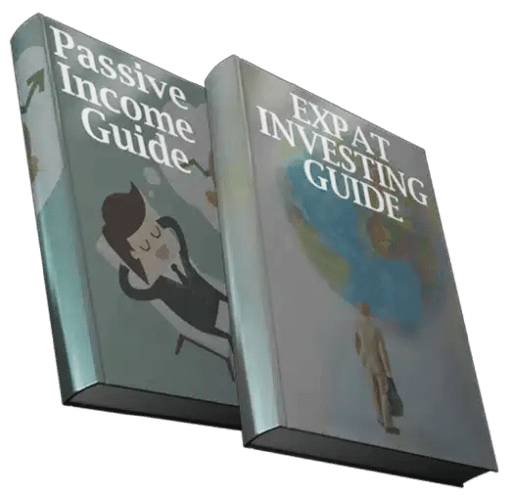The Top 4 Countries With The Best Offshore Bank Accounts In 2022.
If you want to invest as an expat or high-net-worth individual, which is what i specialize in, you can email me (advice@adamfayed.com) or use WhatsApp (+44-7393-450-837).
Nothing written here is formal advice, and the facts might have changed since we first wrote this article.
Table of Contents
Introduction
When it comes to opening your offshore bank accounts, you may wonder which banking institutions in which countries you should put your faith. Which nations are the best for offshore banking registration?
Let’s look at the top four countries with the best offshore bank accounts in this article: Switzerland, Belize, Singapore, and Hong Kong.
If you haven’t started your firm yet, consider forming an offshore company in one of these nations, as this may have an impact on your everyday operations.
A Look Into Offshore Bank Accounts
If you’re new to the offshore world, we’ll explain what an offshore bank is in a few words:
A bank that is located outside of the country where you live is known as an offshore bank.
Offshore banking is the process of securing your assets through financial organisations in other nations. The goal is to protect your fund against unexpected situations while it is being held in your native country.
Offshore bank account – A financial and legal advantage account kept by offshore banks. For a variety of reasons, entrepreneurs open offshore bank accounts. Most significantly, it reduces corporate tax burdens, safeguards wealth and assets, ensures anonymity, and provides currency diversity.
There are several aspects of an offshore bank account that you should be aware of, as well as other considerations. Start by determining whether a bank’s product offerings are compatible with your company’s need and strategy.
To begin, inquire about quick lending, the maximum/minimum transaction threshold, remote opening options, and depositor privacy (you). Most banks would be pleased to address these questions and may even offer some additional advice.
Next, inquire about any optional advantages like as cash bonuses, payroll services, accounting software, travel agent services, or tax preparation assistance. Given the fierce rivalry in the banking industry, it’s not unexpected that some banks be extremely generous with their benefits.
How Do You Pick The Best Offshore Banking Jurisdiction For You
The following are some frequent priorities to consider when choosing an offshore bank account jurisdiction.
Reputation
In general, reputation reflects the quality of the jurisdiction and banking system. Furthermore, a well-known financial country is likely to provide a business-friendly and stable environment.
Even yet, applying for bank accounts in such nations on your own as a foreigner can be difficult. Because the regulations are more complicated than in other nations, more effort will be required to open an offshore bank account in these locations!
Remote Control Opening
Many foreigners are big fans of remote opening because it is much more convenient for them.
It allows you to open an account without having to go to the bank in person, unlike the traditional procedure. As a result, you can save a significant amount of time and money!
Deposit
One of the most important criteria for the finest offshore bank account is a minimal deposit. This is especially true for start-ups, entrepreneurs, and small businesses.
Some offshore banks do not demand an initial deposit in order to open an account. Some banks, on the other hand, may demand foreigners to make a small deposit.
Moreover, numerous enticing banks and financial jurisdictions, such as Hong Kong, Singapore, and Panama, frequently impose hefty deposit minimums.
Time To Process
In most circumstances, the application process for a bank account is relatively quick. Most offshore banks’ timeframes are very similar to one another.
It usually just takes a few working days to get your accounts up and running. It should be noted, however, that the speed and reliability of the submitted papers will play a considerable role in deciding the processing time.
Additional Considerations
The following are some things to think about:
Opening Merchant Accounts Is A Possibility.
If you have an e-commerce business, you should look into merchant accounts. There are special prerequisites for registering this type of account, which are heavily influenced by the merchant provider you choose.
Customers’ Nationalities
Each offshore bank has its own list of nations that are prohibited. As a result, determining the compatibility of your nationality with the bank’s policy is critical.
Customers In The Business Category
If you fit into one of the banks’ favoured categories, you will have an easier time opening an account.
This isn’t always the case, though. Offshore banks generally agree on which business categories are permitted or forbidden (like forex or crypto). As a result, determining the relationship between your business category and the bank’s policy is critical.

The Best Nations To Create A Bank Account Are In 2022
If you’re seeking for the finest nations to open a bank account in, here are some possibilities to think about:
Switzerland Is An Excellent Option For Asset Protection
Because of its high level of security and anonymity, Switzerland is a favoured choice for offshore bank account applications.
Above all, Switzerland is regarded for having a sophisticated banking system. According to the Swiss Bankers Association (SBA), Switzerland’s banks held assets of almost US$ 7 trillion in 2018, with foreigners accounting for nearly half of that.
In addition, Switzerland is among the best countries, with many offshore banks renowned for asset protection. Bankers are prohibited from disclosing account information without the approval of consumers in this country. Any bankers who reveal your personal information may be found in violation of the law, and will almost certainly be fined.
Belize Is The Best Option For A Low-Deposit, Remote Opening
Belize is widely regarded as one of the easiest countries in which to open a bank account. Belize’s appeal stems from its relative stability.
To begin with, based on its liquidity rates, Belize’s offshore banking system is among the most stable in the world.
Furthermore, all banks in Belize are required by law to maintain a liquidity ratio of at least 24 percent. This is far greater than the liquidity ratio of banks in the United States, which is only 3–4%.
Another motivation for consumers to come to Belize for an account opening is the low deposit. If a bank account in Hong Kong or Singapore requires an initial deposit of up to $100,000, a bank account in Belize requires only $500 to a few thousand dollars.
Overall, opening offshore bank accounts in Belize can provide a number of advantages, including the elimination of language barriers and currency deflation, a quick account setup process, remote registration, and so on.
Singapore’s Image Is Crucial
Don’t forget to include Singapore in your list of nations with the best offshore bank accounts. The World Bank ranked this city-state second in the “Ease of Doing Business Rank” benchmark in May 2019.
Singapore has a large banking sector with over 150 banks, 5 of which are Singapore-based and the rest are worldwide. The majority of them offer world-class and top-tier corporate banking services.
Offshore banking in Singapore also provides a diverse range of services to fulfil the needs of both people and businesses. Multiple currencies, internet banking, checking and savings accounts, debit and credit cards, wealth management services, and other services are available.
Many banks in Singapore, surprisingly, allow customers to register their offshore bank account remotely, allowing Singapore non-residents who want to open an offshore bank account from their home country a great deal of freedom and convenience.
Finally, Singapore is a global financial centre and an excellent alternative for most offshore investors worldwide.
OCBC, Citibank, DBS, and UOB are recommended banks for you.
Hong Kong Is Asia’s Most Important Financial Centre
Do you know that Asia is home to six of the top ten financial centres on the planet? According to the 26th edition of the Global Financial Centers Index (GFCI), Hong Kong has been ranked the third most competitive financial centre in the world (as of September 2019).
Hong Kong is a renowned worldwide business and financial centre, in addition to having an effective legal and tax system. It has the world’s highest concentration of banking institutions, with 75 of the top 100 banks located there.
With such a well-connected network of institutions that satisfy international standards, Hong Kong is unquestionably one of the best places to open an offshore account.
HSBC, DBS, Hang Seng Bank, Standard Charter Bank are recommended banks for you.
Although Hong Kong and Singapore are popular destinations for offshore banking, opening an account there might be difficult. In most cases, you’ll need to meet large deposit minimums and visit the bank in person.
As a result, you should prepare your business profile, business plan, and supporting documents for the application with attention. To ensure that your procedure runs properly, seek assistance from a reputable local offshore service provider.
Despite some drawbacks, financial centres such as Hong Kong and Singapore are well worth considering if you’re seeking for a safe haven for your hard-earned riches.
Other Possible Offshore Banking Jurisdictions
You can also look into the nations listed below for the finest offshore bank accounts:
Islands of Cayman
British Virgin Islands (BVI)
Puerto Rico (PR)
Mauritius
UAE
To begin comparing your banking alternatives in different countries, use our Banking Tool to get a complete list of available banks that are all tailored to your individual needs, so you can evaluate which one is the best fit for your company.
What Comes Next
When it comes to offshore banking, each individual or organisation has distinct options. It is vital to thoroughly examine your company’s requirements before selecting the best choice.
If you’re ready to start your business with your own offshore bank account, go to any Offshore Banking Page to review the options and features and find the ideal solution for your needs.
Pained by financial indecision? Want to invest with Adam?

Adam is an internationally recognised author on financial matters, with over 760.2 million answer views on Quora.com, a widely sold book on Amazon, and a contributor on Forbes.



